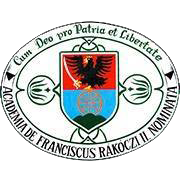Please use this identifier to cite or link to this item:
https://dspace.kmf.uz.ua/jspui/handle/123456789/5522Full metadata record
| DC Field | Value | Language |
|---|---|---|
| dc.contributor.author | Бачо Роберт | uk |
| dc.contributor.author | Robert Bacho | en |
| dc.contributor.author | Bacsó Róbert | hu |
| dc.contributor.author | Сочка Катерина | uk |
| dc.contributor.author | Kateryna Sochka | en |
| dc.contributor.author | Szocska Katalin | hu |
| dc.contributor.author | Шебештень Едіна | uk |
| dc.contributor.author | Edina Shebestyen | en |
| dc.contributor.author | Sebestyén Edina | hu |
| dc.date.accessioned | 2025-11-17T11:34:15Z | - |
| dc.date.available | 2025-11-17T11:34:15Z | - |
| dc.date.issued | 2025 | - |
| dc.identifier.citation | Бачо Роберт, Сочка Катерина, Шебештень Едіна: Вплив валютної політики НБУ на стресостікість економіки України в умовах воєнного стану. In Бізнес-навігатор. 2025. № 4 (81). c. 328-335. | en |
| dc.identifier.issn | 2522-4751 (Print) | - |
| dc.identifier.issn | 2707-6172 (Online) | - |
| dc.identifier.other | DOI: https://doi.org/10.32782/business-navigator.81-49 | - |
| dc.identifier.uri | https://dspace.kmf.uz.ua/jspui/handle/123456789/5522 | - |
| dc.description | Весь випуск: https://business-navigator.ks.ua/2025/81-2025 | en |
| dc.description.abstract | Резюме. У статті досліджено етапи формування та трансформації курсової політики Національного банку України в умовах зростаючих макроекономічних викликів, особливо після початку повномасштабної війни. Проаналізовано особливості переходу від режиму гнучкого курсоутворення до фіксації валютного курсу в липні 2022 року як антикризового заходу. Обґрунтовано, що жорстка курсова прив’язка в умовах надзвичайної невизначеності дозволила стабілізувати валютний ринок, стримати інфляційні очікування, знизити панічні настрої серед населення та утримати рівень золотовалютних резервів. Водночас підкреслено ризики тривалого утримання фіксованого курсу: розбалансування платіжного балансу, посилення девальваційних очікувань та тінізації валютних операцій. На основі аналітичних матеріалів та статистичних показників НБУ зроблено висновки про необхідність поступового повернення до гнучкішого режиму курсоутворення після завершення активної фази війни. Запропоновано напрями удосконалення курсової політики: посилення комунікаційної функції НБУ, збільшення прозорості валютних операцій, розширення інструментарію валютної інтервенції та синхронізація політики з фіскальними заходами уряду. Наголошено, що сучасна курсова політика повинна бути інтегрованою частиною загальної системи макрофінансової стабільності та відповідати стратегічним завданням економічного відновлення України. | uk |
| dc.description.abstract | Abstract. This article provides an in-depth analysis of the transformation and implementation of the exchange rate policy of the National Bank of Ukraine (NBU) in the context of the full-scale war, economic crisis, and increased financial fragility. It outlines the strategic rationale behind the NBU’s decision to shift from a managed floating regime to a fixed exchange rate peg in July 2022, aimed at preserving macroeconomic stability during an unprecedented shock caused by the Russian invasion. The authors argue that this transition was not merely a reactionary tool but a calculated monetary strategy designed to anchor inflationary expectations, reduce psychological panic in currency markets, support financial sector liquidity, and ensure price predictability for critical imports such as energy and defense-related goods. By fixing the official exchange rate at 36.57 UAH/USD, the NBU created a short-term nominal anchor, which helped stabilize economic agents’ expectations, protected household savings from rapid depreciation, and facilitated continued donor and technical assistance flows. However, the article emphasizes that such rigid policies have inherent long-term risks, including the buildup of macroeconomic imbalances, suppressed market signals, widening gap between official and market rates, weakening export incentives, and increasing reliance on administrative restrictions. The authors evaluate the NBU’s gradual steps to reintroduce flexibility by refining the currency intervention mechanism, adjusting the official rate, and lifting restrictions on current account operations. Based on comparative analysis with exchange rate policies of other emerging economies under crisis conditions, the study underscores the importance of maintaining a balance between exchange rate stability and external competitiveness. It also highlights the role of clear and timely communication by the central bank as a trust-building mechanism with market participants and society at large. The research concludes that Ukraine’s future exchange rate regime must be aligned with broader monetary and fiscal reforms and integrated into the framework of European economic convergence. Strategic return to flexible exchange rate arrangements, backed by institutional strengthening and capital market development, is essential for post-war recovery, investor confidence, and sustainable economic growth. | en |
| dc.language.iso | uk | en |
| dc.publisher | Видавничий Дім «Гельветика» | en |
| dc.relation.ispartofseries | ;№ 4 (81) | - |
| dc.rights | Attribution-NonCommercial-NoDerivs 3.0 United States | * |
| dc.rights.uri | http://creativecommons.org/licenses/by-nc-nd/3.0/us/ | * |
| dc.subject | валютна політика | uk |
| dc.subject | Національний банк України | uk |
| dc.subject | інфляція | uk |
| dc.subject | девальвація | uk |
| dc.subject | фінансова стабільність | uk |
| dc.title | Вплив валютної політики НБУ на стресостікість економіки України в умовах воєнного стану | en |
| dc.title.alternative | Impact of the NBU's monetary policy on the stress resistance of the Ukrainian economy in the conditions of martial law | en |
| dc.type | dc.type.study | en |
| Appears in Collections: | Bacsó Róbert Sebestyén Edina Szocska Katalin | |
Files in This Item:
| File | Description | Size | Format | |
|---|---|---|---|---|
| Bacho_Sochka_Shebeshten_Vpliv_valyutnoyi_politiki_NBU_stresostikist_ekonomiki_Ukrayini_2025.pdf | Бачо Роберт, Сочка Катерина, Шебештень Едіна: Вплив валютної політики НБУ на стресостікість економіки України в умовах воєнного стану. In Бізнес-навігатор. 2025. № 4 (81). c. 328-335. | 4.74 MB | Adobe PDF | View/Open |
This item is licensed under a Creative Commons License





